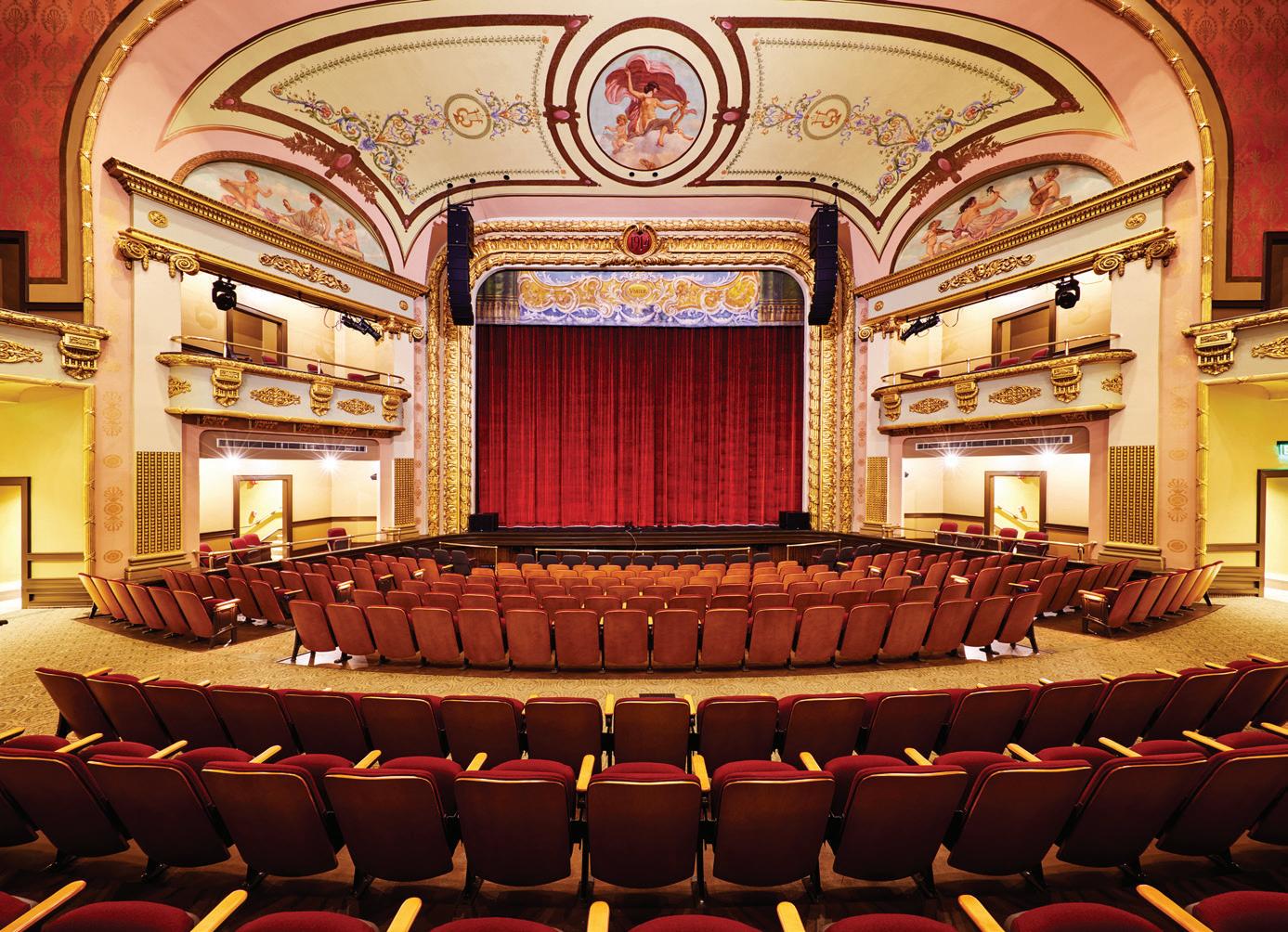
2 minute read
TIMELESS STAGES LIVING HISTORY
There’s something downright magical about seeing the talent of today performing in theaters that have welcomed generation after generation of audiences. And far from being clustered only in Boston’s Theater District, New England’s timeless stages can be found in a wide range of scenic locales that lure vacationers and visiting Broadway actors alike. If you’re fortunate enough to time your visit to include a show, it could end up being your vacation’s dramatic highlight.
Summer stock theater is not a New England invention, but it has become nearly synonymous with this region—and no more so than at the Cape Playhouse in MASSACHUSETTS, the longestrunning professional summer theater in the United States. When it was founded in Dennis in 1927, the playhouse offered Broadway actors a venue where they could work during the slow summer season, and stars like Bette Davis and Henry Fonda eagerly took up the offer. Another theater tradition can be found in the Massachusetts Berkshires, where the stately neoclassical Adams Memorial Theatre at Williams College has hosted the world-famous Williamstown Theatre Festival since 1955. Several shows that premiered at the festival, including The Bridges of Madison County and The Elephant Man, later went on to Broadway acclaim.
Theater lovers have felt at home in NEW HAMPSHIRE’s Lakes Region for more than a century. Opened in 1914, the Venetian-themed Colonial Theatre in Laconia originally held live performances before it was converted to a movie house. Closed for nearly two decades, it was painstakingly restored and reopened in 2021 and—true to its legacy—now presents a mix of live theater, comedy, and movies. A bit farther north, in Tamworth, The Barnstormers still assembles a professional troupe each summer, just as it has since 1931, when it was co-founded by President Grover Cleveland’s youngest son. In the former Main Street shop that has been the ensemble’s permanent home since 1935, you’ll see top talent from around the country performing in a heartwarming play or perhaps a musical, and you’ll experience a sense of connection only possible in a theater with fewer than 300 seats.

While bringing the past to life is the mission of any good historical museum, some of New England’s best-loved attractions stand out for offering a true immersion in the world of yesteryear. As you interact with interpreters dressed in period clothing, try your hand at traditional crafts, and get up close with heritage farm breeds, you’ll experience life as it was lived in New England’s early settlements, seafaring villages, working farmsteads, and architecturally rich towns.
Early American farmers weren’t peasants, but many weren’t the rugged individualists of popular myth, either. Those who worked as tenant farmers had to pay to raise crops on land they didn’t own, and they could often be evicted without warning. This tenuous way to make a living is explored at RHODE ISLAND’s Coggeshall Farm Museum, a living history museum established on the site of a former salt-marsh tenant farm in Bristol. Fields and restored farm buildings dating to the 18th century are populated by costumed interpreters, who will invite you to join in creating old-time crafts. Plus, kids will love visiting the heritage-breed pigs and sheep.

At Mystic Seaport Museum in CONNECTICUT, visitors can wander the streets of a re-created maritime village typical of 19th-century New England, stopping along the way to watch carpenters restore antique boats at the Preservation Shipyard, learn about blacksmithing and other trades that once served the shipbuilding industry here, and step aboard historic vessels that include the Charles W. Morgan, the world’s last surviving wooden whaling ship. The museum’s tour boats, including the coal-fired steamboat Sabino, provide the opportunity to see the entire Seaport Village from the water, while Spouter Tavern on the waterfront serves up Moby Dick inspired nostalgia along with local beers and, of course, New England clam chowder.










